Xue Xian Chen
age ~79
from Ridgewood, NY
- Also known as:
-
- Xue X Chen
- Xian Chen Xue
Xue Chen Phones & Addresses
- Ridgewood, NY
- Boise, ID
- Brooklyn, NY
Us Patents
-
Methods Of Forming Nanostructures Including Metal Oxides Using Block Copolymer Materials
view source -
US Patent:20230116129, Apr 13, 2023
-
Filed:Dec 6, 2022
-
Appl. No.:18/062495
-
Inventors:- Boise ID, US
Adam L. Olson - Boise ID, US
William R. Brown - Boise ID, US
Ho Seop Eom - Boise ID, US
Xue Chen - Boise ID, US
Kaveri Jain - Boise ID, US
Scott Schuldenfrei - Boise ID, US -
International Classification:H01L 21/027
C08G 81/00
H01L 21/033
H01L 21/3105
B81C 1/00
C08L 53/00
H01L 21/02 -
Abstract:A self-assembled nanostructure comprises first domains and second domains. The first domains comprise a first block of a block copolymer material and an activatable catalyst. The second domains comprise a second block and substantially without the activatable catalyst. The activatable catalyst is capable of generating catalyst upon application of activation energy, and the generated catalyst is capable of reacting with a metal oxide precursor to provide a metal oxide. A semiconductor structure comprises such self-assembled nanostructure on a substrate.
-
Determining Overlay Of Features Of A Memory Array
view source -
US Patent:20200321283, Oct 8, 2020
-
Filed:Apr 2, 2019
-
Appl. No.:16/372950
-
Inventors:- Boise ID, US
Kari McLaughlin - Boise ID, US
Mario J. Di Cino - Boise ID, US
Xue Chen - Boise ID, US
Lane A. Gray - Boise ID, US
Joseph G. Lindsey - Kuna ID, US -
International Classification:H01L 23/544
H01L 21/768
H01L 21/3213
H01L 21/027
H01L 23/528 -
Abstract:Methods, apparatuses, and systems related to determining overlay of features of a memory array are described. An example method includes forming a plurality of contacts on a working surface and selectively forming a first portion of a layer of conductive lines and a second portion of the layer of conductive lines in contact with the contacts. The first portion of the layer of conductive lines formed over the working surface is separated from the second portion of the layer of conductive lines formed over the working surface by a gap. The method includes determining an overlay of at least one of the contacts formed over the working surface in the gap relative to one of the conductive lines formed over the working surface.
-
Semiconductor Device Structures
view source -
US Patent:20180366406, Dec 20, 2018
-
Filed:Jul 23, 2018
-
Appl. No.:16/042255
-
Inventors:- Boise ID, US
Kaveri Jain - Boise ID, US
Lijing Gou - Boise ID, US
William R. Brown - Boise ID, US
Ho Seop Eom - Boise ID, US
Xue (Gloria) Chen - Boise ID, US
Anton J. deVilliers - Clifton Park NY, US -
International Classification:H01L 23/528
H01L 21/467
H01L 23/52
H01L 21/768
H01L 21/027
H01L 21/308
H01L 21/02 -
Abstract:A method of forming a semiconductor structure comprises forming pools of acidic or basic material in a substrate structure. A resist is formed over the pools of acidic or basic material and the substrate structure. The acidic or basic material is diffused from the pools into portions of the resist proximal to the pools more than into portions of the resist distal to the pools. Then, the resist is exposed to a developer to remove a greater amount of the resist portions proximal to the pools compared to the resist portions distal to the pools to form openings in the resist. The openings have wider portions proximal to the substrate structure and narrower portions distal to the substrate structure. The method may further comprise forming features in the openings of the resist. The features have wider portions proximal to the substrate structure and narrower portions distal to the substrate structure.
-
Self-Assembled Nanostructures Including Metal Oxides, Semiconductor Structures Comprised Thereof, And Methods Of Forming Same
view source -
US Patent:20180337035, Nov 22, 2018
-
Filed:Jul 30, 2018
-
Appl. No.:16/049329
-
Inventors:- Boise ID, US
Adam L. Olson - Boise ID, US
William R. Brown - Boise ID, US
Ho Seop Eom - Boise ID, US
Xue Chen - Boise ID, US
Kaveri Jain - Boise ID, US
Scott Schuldenfrei - Boise ID, US -
International Classification:H01L 21/027
H01L 21/3105
H01L 21/033
H01L 21/02
B81C 1/00
C08L 53/00
C08G 81/00 -
Abstract:A self-assembled nanostructure comprises first domains and second domains. The first domains comprise a first block of a block copolymer material and an activatable catalyst. The second domains comprise a second block and substantially without the activatable catalyst. The activatable catalyst is capable of generating catalyst upon application of activation energy, and the generated catalyst is capable of reacting with a metal oxide precursor to provide a metal oxide. A semiconductor structure comprises such self-assembled nanostructure on a substrate.
-
Semiconductor Device Structures
view source -
US Patent:20170263552, Sep 14, 2017
-
Filed:May 26, 2017
-
Appl. No.:15/606312
-
Inventors:- Boise ID, US
Kaveri Jain - Boise ID, US
Lijing Gou - Boise ID, US
William R. Brown - Boise ID, US
Ho Seop Eom - Boise ID, US
Xue (Gloria) Chen - Boise ID, US
Anton J. deVilliers - Clifton Park NY, US -
International Classification:H01L 23/528
H01L 21/027
H01L 23/52
H01L 21/467
H01L 21/308
H01L 21/02
H01L 21/768 -
Abstract:A method of forming a semiconductor structure comprises forming pools of acidic or basic material in a substrate structure. A resist is formed over the pools of acidic or basic material and the substrate structure. The acidic or basic material is diffused from the pools into portions of the resist proximal to the pools more than into portions of the resist distal to the pools. Then, the resist is exposed to a developer to remove a greater amount of the resist portions proximal to the pools compared to the resist portions distal to the pools to form openings in the resist. The openings have wider portions proximal to the substrate structure and narrower portions distal to the substrate structure. The method may further comprise forming features in the openings of the resist. The features have wider portions proximal to the substrate structure and narrower portions distal to the substrate structure.
-
Semiconductor Device Structures
view source -
US Patent:20160307839, Oct 20, 2016
-
Filed:Jun 24, 2016
-
Appl. No.:15/192060
-
Inventors:- Boise ID, US
Kaveri Jain - Boise ID, US
Lijing Gou - Boise ID, US
William R. Brown - Boise ID, US
Ho Seop Eom - Boise ID, US
Xue Chen - Boise ID, US
Anton J. deVilliers - Clifton Park NY, US -
International Classification:H01L 23/528
H01L 21/308
H01L 21/768 -
Abstract:A method of forming a semiconductor structure comprises forming pools of acidic or basic material in a substrate structure. A resist is formed over the pools of acidic or basic material and the substrate structure. The acidic or basic material is diffused from the pools into portions of the resist proximal to the pools more than into portions of the resist distal to the pools. Then, the resist is exposed to a developer to remove a greater amount of the resist portions proximal to the pools compared to the resist portions distal to the pools to form openings in the resist. The openings have wider portions proximal to the substrate structure and narrower portions distal to the substrate structure. The method may further comprise forming features in the openings of the resist. The features have wider portions proximal to the substrate structure and narrower portions distal to the substrate structure.
-
Self-Assembled Nanostructures Including Metal Oxides, Semiconductor Structures Comprising Thereof, And Methods Of Forming Same
view source -
US Patent:20160042941, Feb 11, 2016
-
Filed:Oct 22, 2015
-
Appl. No.:14/920018
-
Inventors:- Boise ID, US
Adam L. Olson - Boise ID, US
William R. Brown - Boise ID, US
Ho Seop Eom - Boise ID, US
Xue Chen - Boise ID, US
Kaveri Jain - Boise ID, US
Scott Schuldenfrei - Boise ID, US -
International Classification:H01L 21/027
C08L 53/00
H01L 21/033
H01L 21/3105
H01L 21/02 -
Abstract:A self-assembled nanostructure comprises first domains and second domains. The first domains comprise a first block of a block copolymer material and an activatable catalyst. The second domains comprise a second block and substantially without the activatable catalyst. The activatable catalyst is capable of generating catalyst upon application of activation energy, and the generated catalyst is capable of reacting with a metal oxide precursor to provide a metal oxide. A semiconductor structure comprises such self-assembled nanostructure on a substrate.
-
Methods Of Forming Patterns
view source -
US Patent:20160027638, Jan 28, 2016
-
Filed:Oct 1, 2015
-
Appl. No.:14/873089
-
Inventors:- Boise ID, US
- Midland MI, US
- Marlborough MA, US
Ho Seop Eom - Boise ID, US
Xue Gloria Chen - Boise ID, US
Nik Mirin - Boise ID, US
Dan Millward - Boise ID, US
Peter Trefonas, III - Medway MA, US
Phillip Dene Hustad - Natick MA, US
Jong Keun Park - Westborough MA, US
Christopher Nam Lee - Austin TX, US -
International Classification:H01L 21/027
H01L 21/033 -
Abstract:Some embodiments include methods of forming patterns. A first mask is formed over a material. The first mask has features extending therein and defines a first pattern. The first pattern has a first level of uniformity across a distribution of the features. A brush layer is formed across the first mask and within the features to narrow the features and create a second mask from the first mask. The second mask has a second level of uniformity across the narrowed features which is greater than the first level of uniformity. A pattern is transferred from the second mask into the material.
Resumes

Photographer
view sourceLocation:
27 Sunburst Dr, Deer Park, NY 11729
Industry:
Museums And Institutions
Work:
The Metropolitan Museum of Art
Photographer
Dorothea Rockburne Studio Oct 2016 - Feb 2017
Studio Administrator
The Metropolitan Museum of Art Sep 2015 - May 2016
Imaging Intern
The Museum of Modern Art Jun 2015 - Aug 2015
Imaging Services Intern
American Federation of Arts Sep 2014 - May 2015
Exhibition Department Intern
Photographer
Dorothea Rockburne Studio Oct 2016 - Feb 2017
Studio Administrator
The Metropolitan Museum of Art Sep 2015 - May 2016
Imaging Intern
The Museum of Modern Art Jun 2015 - Aug 2015
Imaging Services Intern
American Federation of Arts Sep 2014 - May 2015
Exhibition Department Intern
Education:
New York University 2014 - 2016
Masters, Master of Arts Stony Brook University 2008 - 2012
Bachelors, Bachelor of Arts, Studio Arts
Masters, Master of Arts Stony Brook University 2008 - 2012
Bachelors, Bachelor of Arts, Studio Arts
Skills:
Photography
Portrait Photography
Fine Art
Art
Digital Photography
Microsoft Office
Photoshop
Illustrator
Indesign
Commercial Photography
Photo Retouching
Social Media
Image Manipulation
Painting
Sculpture
Film Photography
Developing B/W Films
Museums
Exhibitions
Museum Collection
Arts Administration
Contemporary Art
Visual Arts
Exhibition Management
Adobe Photoshop
Art Exhibitions
Curating
Editing
Portrait Photography
Fine Art
Art
Digital Photography
Microsoft Office
Photoshop
Illustrator
Indesign
Commercial Photography
Photo Retouching
Social Media
Image Manipulation
Painting
Sculpture
Film Photography
Developing B/W Films
Museums
Exhibitions
Museum Collection
Arts Administration
Contemporary Art
Visual Arts
Exhibition Management
Adobe Photoshop
Art Exhibitions
Curating
Editing
Interests:
Learning Different Cultures
See 6+See Less
Creating Art
Printing
Fine Art
Ceramics
Watch Mechanical Machines Working
Travelling
Museum Studies
Brain
Photography
Sculpture
Museum Education
Psychology
Art Education
Philosophy
Museums
Traveling
Painting
Art Administration
Human Brain
See 6+See Less
Creating Art
Printing
Fine Art
Ceramics
Watch Mechanical Machines Working
Travelling
Museum Studies
Brain
Photography
Sculpture
Museum Education
Psychology
Art Education
Philosophy
Museums
Traveling
Painting
Art Administration
Human Brain
Languages:
Mandarin
English
English

Pharmacist
view sourceLocation:
3601 A St, Philadelphia, PA 19134
Industry:
Hospital & Health Care
Work:
Ascension Jun 2017 - 2018
Pgy1 Pharmacy Practice Resident
New York-Presbyterian Hospital Jun 2017 - 2018
Pharmacist
Tenet Healthcare Jun 2014 - May 2017
Pharmacy Intern
Pgy1 Pharmacy Practice Resident
New York-Presbyterian Hospital Jun 2017 - 2018
Pharmacist
Tenet Healthcare Jun 2014 - May 2017
Pharmacy Intern
Education:
St. Louis College of Pharmacy 2011 - 2017
Doctorates, Doctor of Pharmacy, Pharmacy
Doctorates, Doctor of Pharmacy, Pharmacy
Skills:
Medication Therapy Management
Patient Counseling
Certified Immunizer
Cpr Certified
Public Speaking
Microsoft Office
Pharmaceutical Industry
Immunization
Powerpoint
Community Pharmacy
Healthcare
Research
Small Business
Patient Counseling
Certified Immunizer
Cpr Certified
Public Speaking
Microsoft Office
Pharmaceutical Industry
Immunization
Powerpoint
Community Pharmacy
Healthcare
Research
Small Business
Interests:
Politics
Social Services
Health
Social Services
Health
Languages:
English
Mandarin
Cantonese
Mandarin
Cantonese
Certifications:
Cpr and Basic Cardiac Life Support Certified
Pharmacy-Based Immunization Delivery
Pharmacy Intern
Iv Aseptic Technique & Usp 797 Competency
Collaborative Institutional Training Initiative (Citi) Research Certification
Advanced Cardiovascular Life Support (Acls)
Pharmacist
Board Certified Pharmacotherapy Specialist (Bcpt)
Immunization
American Heart Association | American Stroke Association
American Pharmacists Association
State of Missouri- Office of Administration
St. Louis College of Pharmacy
Pharmacy-Based Immunization Delivery
Pharmacy Intern
Iv Aseptic Technique & Usp 797 Competency
Collaborative Institutional Training Initiative (Citi) Research Certification
Advanced Cardiovascular Life Support (Acls)
Pharmacist
Board Certified Pharmacotherapy Specialist (Bcpt)
Immunization
American Heart Association | American Stroke Association
American Pharmacists Association
State of Missouri- Office of Administration
St. Louis College of Pharmacy

Xue Chen
view source
Xue Xing Chen
view source
Xue Yan Chen
view source
Xue Chen
view sourceLocation:
United States

Xue Chen
view sourceLocation:
United States
Name / Title
Company / Classification
Phones & Addresses
Owner
Kai Z Wang
Ret Records/Cd's/Tapes
Ret Records/Cd's/Tapes
24 E Broadway, New York, NY 10002
(212)6253405
(212)6253405
President
ASIAN GINGER INC
Restaurants
Restaurants
70 Central St, Foxboro, MA 02035
759 51 St, Brooklyn, NY 11220
(508)6983333
759 51 St, Brooklyn, NY 11220
(508)6983333
Chairman
K & J Fruit Market
Whol Fruits/Vegetables
Whol Fruits/Vegetables
5024 8 Ave, Brooklyn, NY 11220
incorporator
LIU'S CHINA BUFFET, INC
OPERATE A CHINESE RESTAURANT
OPERATE A CHINESE RESTAURANT
Dothan, AL 36303
New York, NY 10013
New York, NY 10013
Executive, Principal
Midtown Buffet
Eating Place
Eating Place
566 Fashion Ave, New York, NY 10018
566 7 Ave, New York, NY 10018
(212)7684422
566 7 Ave, New York, NY 10018
(212)7684422
NEW OCEAN PALACE ASIAN CUISINE LC
520A Providence Rd, Brooklyn, CT
39 Division St Rm2B, New York, NY 10002
520A Providene Rd, Brooklyn, CT
39 Division St Rm2B, New York, NY 10002
520A Providene Rd, Brooklyn, CT
TRANS YUE INTERNATIONAL TRADE LC
TYPHOON ASIAN FUSION BISTRO INC
Myspace
Flickr
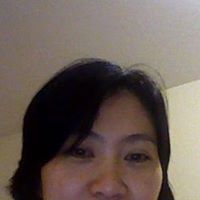
Xue Fang Chen
view source
Xue Ling Chen
view source
Xue Feng Chen
view source
Xue Juan Chen
view source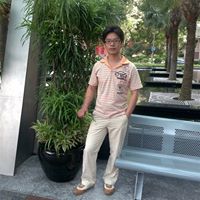
Xue Chen
view source
Xue Feng Chen
view source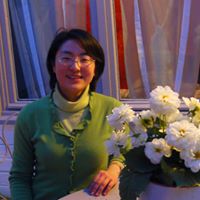
Xue Chen
view source
Xue Hua Chen
view sourcePlaxo

Xue Chen
view sourceSan Francisco
Classmates

Xue Xia Chen
view sourceSchools:
Lower East Side Preparatory New York NY 2001-2005
Community:
Jeffery Hartley, Kevin Warren, Linlin Huang, Rodney Stafford

Lower East Side Preparato...
view sourceGraduates:
Roberto Pumarejo (1988-1992),
Gina Vukdedaj (1992-1996),
Jannette Concepcion (1987-1991),
Xue Xia Chen (2001-2005),
Thomas Horton (1991-1994)
Gina Vukdedaj (1992-1996),
Jannette Concepcion (1987-1991),
Xue Xia Chen (2001-2005),
Thomas Horton (1991-1994)

St. Mark School, Brooklyn...
view sourceGraduates:
Xue Mei Chen (1982-1986),
Stephanie Termine (1956-1960),
Gerard Gallagher (1957-1965),
Margery Davis (1980-1986)
Stephanie Termine (1956-1960),
Gerard Gallagher (1957-1965),
Margery Davis (1980-1986)
Googleplus
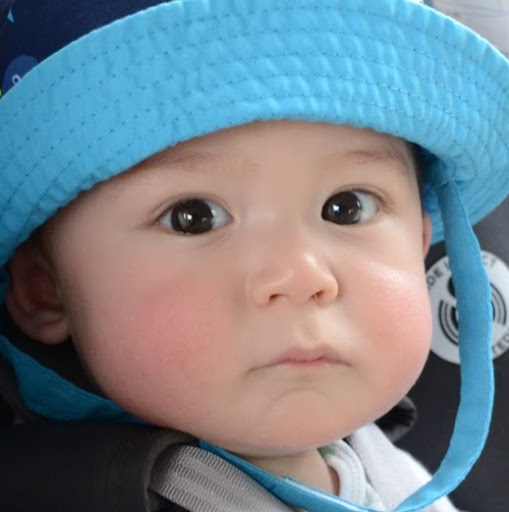
Xue Chen
Education:
University of Kansas - Master's of Urban Planning, Southwest Jiaotong University - Bachelor's of Urban Planning
Tagline:
Complex, Compromise & Comprehensive

Xue Chen

Xue Chen
Tagline:
Hot sexy girl
Bragging Rights:
London olymics bronze medalist
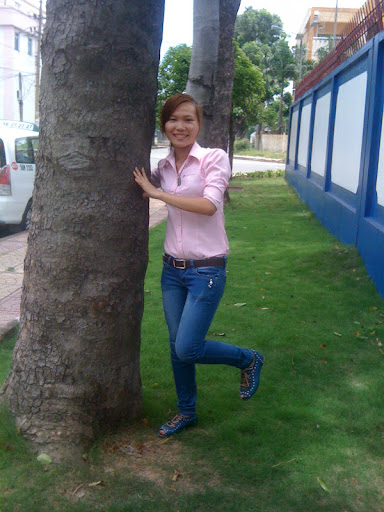
Xue Chen

Xue Chen
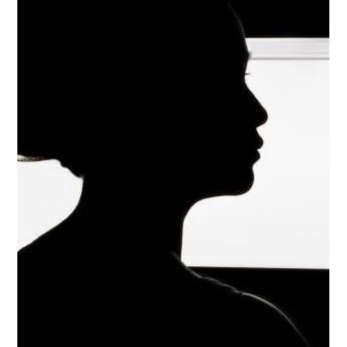
Xue Chen
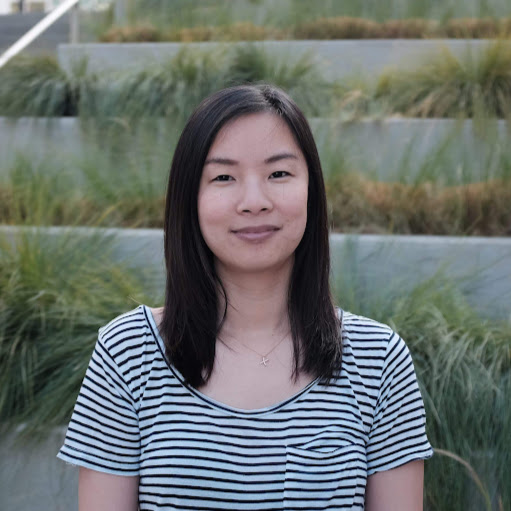
Xue Chen
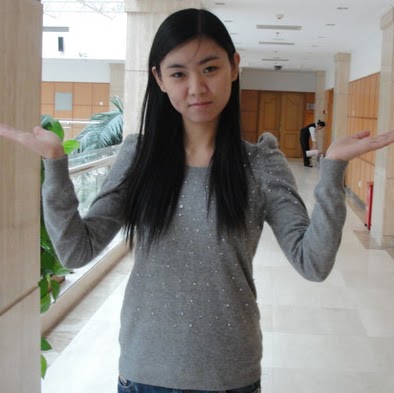
Xue Chen
Youtube
Get Report for Xue Xian Chen from Ridgewood, NY, age ~79















